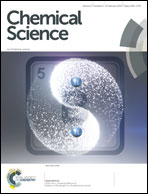Controllable extension of hairpin-structured flaps to allow low-background cascade invasive reaction for a sensitive DNA logic sensor for mutation detection†
Abstract
A DNA logic sensor was constructed for gene mutation analysis based on a novel signal amplification cascade by controllably extending a hairpin-structured flap to bridge two invasive reactions. The detection limit was as low as 0.07 fM, and the analytical specificity is high enough to unambiguously pick up 0.02% mutants from a large amount of wild-type DNA. Gene mutations related to the personalized medicine of gefitinib, a typical tyrosine kinase inhibitor, were analyzed by the DNA logic sensor with only a 15 minute response time. Successful assay of tissue samples and cell-free plasma DNA indicates that the new concept we proposed here could benefit clinicians for straightforward prescription of a mutation-targeted drug.



 Please wait while we load your content...
Please wait while we load your content...